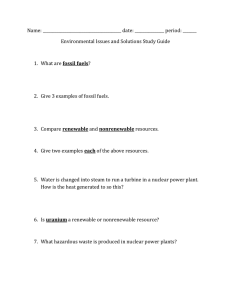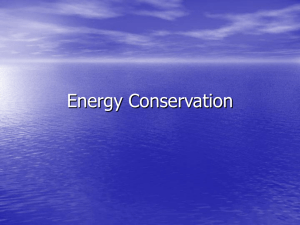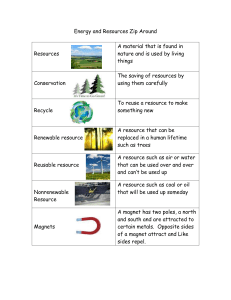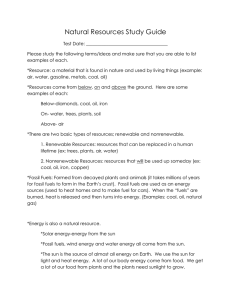NON RENEWABLE ENERGY
advertisement
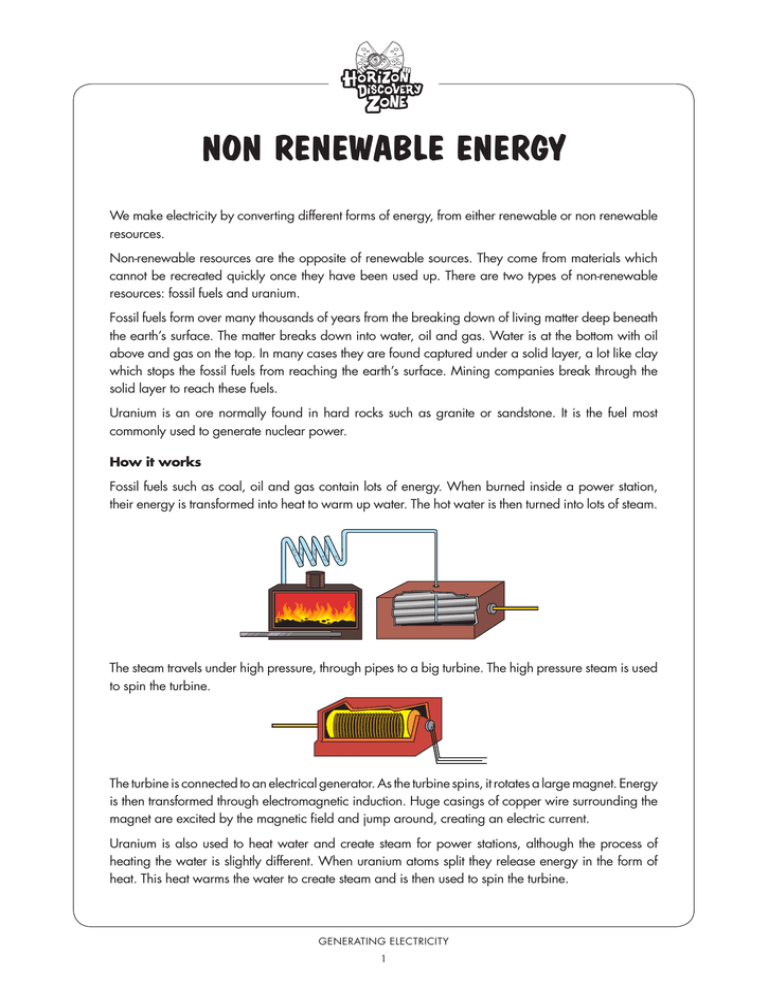
NON RENEWABLE ENERGY We make electricity by converting different forms of energy, from either renewable or non renewable resources. Non-renewable resources are the opposite of renewable sources. They come from materials which cannot be recreated quickly once they have been used up. There are two types of non-renewable resources: fossil fuels and uranium. Fossil fuels form over many thousands of years from the breaking down of living matter deep beneath the earth’s surface. The matter breaks down into water, oil and gas. Water is at the bottom with oil above and gas on the top. In many cases they are found captured under a solid layer, a lot like clay which stops the fossil fuels from reaching the earth’s surface. Mining companies break through the solid layer to reach these fuels. Uranium is an ore normally found in hard rocks such as granite or sandstone. It is the fuel most commonly used to generate nuclear power. How it works Fossil fuels such as coal, oil and gas contain lots of energy. When burned inside a power station, How it Works: Diagram 1 hot water is then turned into lots of steam. their energy is transformed into heat to warm up water. The How it Works: Diagram 1 How it Works: Diagram The steam travels under high pressure, through pipes to a2big turbine. The high pressure steam is used How it Works: Diagram 2 to spin the turbine. The turbine is connected to an electrical generator. As the turbine spins, it rotates a large magnet. Energy is then transformed through electromagnetic induction. Huge casings of copper wire surrounding the magnet are excited by the magnetic field and jump around, creating an electric current. Uranium is also used to heat water and create steam for power stations, although the process of heating the water is slightly different. When uranium atoms split they release energy in the form of heat. This heat warms the water to create steam and is then used to spin the turbine. GENERATING ELECTRICITY 1 NON RENEWABLE ENERGY Advantages & Disadvantages Australia has one of the highest greenhouse gas emissions rates in the world Greenhouse gases contribute to global warming and climate change. Every time we use energy from fossil fuels, like using electricity generated from coal, driving a petrol-driven car, or going on aeroplane flight, there is a release of carbon dioxide and other greenhouse gases into the atmosphere. This is called carbon emission. Fossil fuels don’t replenish themselves like renewable energy sources so we need to find alternatives. But right now there are some advantages to using fossil fuels: • We have a big supply of coal, oil and gas in Australia which means it is a cheaper source of fuel • Very large amounts of electricity can be generated from fossil fuels. However there are disadvantages to using fossil fuels and these outweigh the advantages. These include; • Even though we have a big supply in Australia, it will run out one day. • In fact, supplies around the world are starting to run low and as supplies reduce fuel prices increase. • Exhaust fumes from our cars release carbon dioxide which adds to global warming and climate change. • Fossil fuels are difficult and expensive to transport globally. • They are harmful to our environmental, especially to animal homes. GENERATING ELECTRICITY 2
